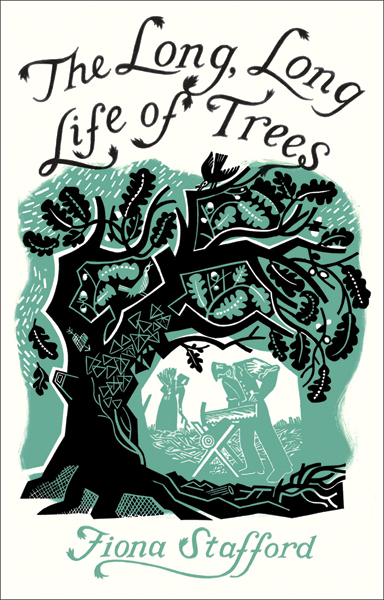Book of the week: The Long, Long Life of Trees
This enchanting collection of tree essays combines natural with cultural and social history, says Mark Griffiths.


The Long, Long Life of Trees by Fiona Stafford (Yale University Press, £16.99)
Late one winter’s night some years ago, I was about to turn in when an unexpected talk on Radio 3 stopped me in my tracks. The speaker was Fiona Stafford; her subject, the meaning of trees. As a professor of english literature at Oxford University, Dr Stafford works on the Romantic poets and other writers concerned with Nature and landscape. Quotations from these authors adorned her talk, but not nearly so brightly as her own words.
She spoke (that is, wrote) wonderfully—by no means a given with English literature academics these days. Moreover, she knew whereof she spoke, which, alas, is all too rare among humanities people who venture into the green world.
That night, I heard evidence of research into a remarkable array of fields, a proper regard for and understanding of the sciences and, above all, experience and passion. Clearly, she knew her subjects intimately; they were towering presences in her life. Since then, she has given further tree talks, all so excellent that I’ve listened to them with a mounting fear that (BBC iPlayer notwithstanding) what is aired is writ in water. I needn’t have fretted.
Dr Stafford has developed her broadcasts, enlarging and refining them into a major new book, The Long, Long Life of Trees. It’s a lovely thing to have and to hold: a comfortable 287-page hardback, its endpapers chequered with a semi-abstract arboreal motif, its dust jacket decorated with a life-sustaining oak depicted by Clare Curtis.
Similarly pleasing are the 60 monochrome illustrations, an eclectic but always apt selection that ranges from Classical artefacts to photographs by way of Renaissance woodcuts, painted and sculpted masterpieces, fairy-tale illustrations, botanical and horticultural plates, 19th-century prints and the wood engravings, sombre yet sublime, of Gwen Raverat and Agnes Miller Parker.
As for the words—well, I was wrong to have thought them beyond improvement when I heard their spoken, earlier version. here are 17 essays on familiar trees—yew, cherry, rowan, olive, cypress, oak and so on—with one genus per chapter. each is an outstanding example of an exciting, relatively new genre, of which Country Life has been a notable pioneer. For want of a better (or any) term, let’s call it plant history, in that it combines natural with cultural and social history, taking account not only of the biology and ecology of plants, but also of our relationship with them, past and present.
Exquisite houses, the beauty of Nature, and how to get the most from your life, straight to your inbox.
For example, Dr Stafford’s chapter on birch starts with childhood memories of the tree in her grand-parents’ garden, before ranging through its use in punishment, besoms and broomsticks, the palette of bark and foliage colours offered by Betula species, their products—medicinal and manufacturing—and the special place that this genus occupies in Nature and the imagination as a sentry of remote borders and marker of last habitable extremes.
This birch excursion travels across time and the Northern hemisphere, en route taking in the writings of, among others, Dorothy Wordsworth and Robert Frost and the paintings of John everett Millais and Gustav Klimt. Miraculously, she completes it in just 10 pages. By their end, as so often in this book, one is left with the sense of the magic of the reality that is an astonishingly complex, ancient and still- evolving symbiosis.
In her lyrical and powerful introduction, Dr Stafford remarks: ‘The respiratory systems of trees, which feed on carbon dioxide and exhale oxygen, complement those of humans so well that every tree is really a tree of life.’ That epitomises this splendid volume. It is a testament to the mysterious and essential union between the arboreal realm and our own.
Country Life is unlike any other magazine: the only glossy weekly on the newsstand and the only magazine that has been guest-edited by His Majesty The King not once, but twice. It is a celebration of modern rural life and all its diverse joys and pleasures — that was first published in Queen Victoria's Diamond Jubilee year. Our eclectic mixture of witty and informative content — from the most up-to-date property news and commentary and a coveted glimpse inside some of the UK's best houses and gardens, to gardening, the arts and interior design, written by experts in their field — still cannot be found in print or online, anywhere else.
